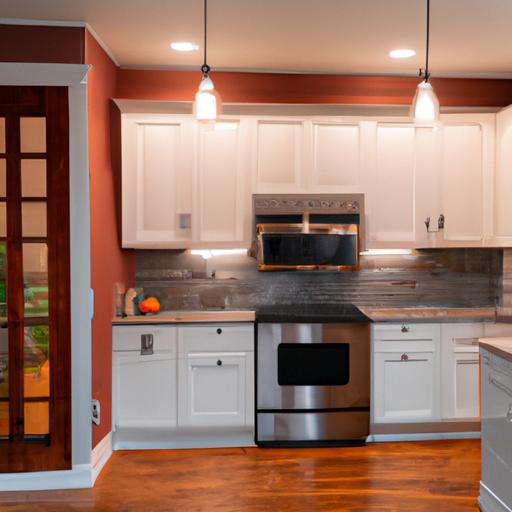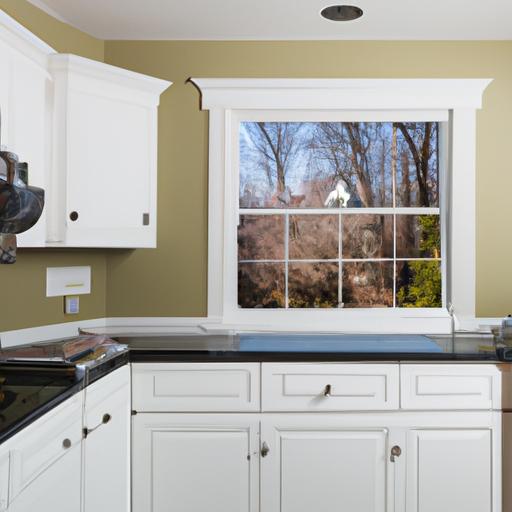How to Finance Home Improvements: A Guide to Enhancing Your Living Space
Introduction
When you walk through the threshold of your home, do you feel a sense of calm and contentment, or are you constantly reminded of the outdated fixtures and worn-out floors? Your home should be your sanctuary, reflecting your personality and providing comfort. However, as time passes, the need for renovations becomes inevitable. This is where the importance of financing home improvements comes into play.
Investing in your home upgrades not only enhances the aesthetics and functionality of your living space but also increases the overall value of your property. Imagine walking into a beautifully renovated kitchen, with sleek countertops and modern appliances, or stepping into a luxurious bathroom with a spa-like ambiance. These enhancements not only elevate your quality of life but also serve as a wise investment in the long run.
In this comprehensive guide, we will delve into the various aspects of financing home improvements, exploring the different options available to you and providing valuable insights on how to embark on this exciting journey of transforming your living space. Let’s embark on this transformative journey together and unlock the potential of your home!
Assessing Your Home Improvement Needs
Identifying Areas for Improvement
Before diving into the world of home improvements, take a moment to assess your living space. What are the areas that are in dire need of a makeover? Is it the outdated kitchen cabinets that have seen better days, or perhaps the shabby bathroom tiles that no longer exude charm? By identifying these key areas for improvement, you can prioritize your renovation projects based on urgency and impact.
Setting Priorities for Renovations
Once you have pinpointed the areas that require attention, it’s time to set priorities for your renovations. Are you looking to enhance the functionality of your home, such as adding a much-needed extra bedroom or expanding your living room space? Or are you more inclined towards cosmetic upgrades, like refreshing the paint colors or installing new flooring? By establishing clear priorities, you can create a roadmap for your home improvement journey, ensuring that your investments align with your goals and budget constraints.
Understanding Financing Options
Traditional Loans for Home Improvements
When it comes to financing your home improvements, traditional loans are a popular option for many homeowners. These loans, offered by banks and financial institutions, provide a lump sum of money that you can use to fund your renovation projects. With fixed interest rates and predictable repayment schedules, traditional loans offer stability and clarity in managing your finances.
Home Equity Loans and Lines of Credit
Another viable financing option for home improvements is through home equity loans and lines of credit. By leveraging the equity in your home, you can access funds for renovations at competitive interest rates. Home equity loans provide a lump sum amount, while lines of credit offer a revolving credit line that you can draw from as needed. These options allow you to tap into your home’s value to finance upgrades and add value to your property.
Government Programs and Grants for Renovations
In addition to traditional loans and home equity options, there are government programs and grants available to assist homeowners in financing their renovation projects. These programs, often tailored to specific criteria such as low-income households or energy-efficient upgrades, provide financial support to make home improvements more accessible. By exploring these government initiatives, you may uncover opportunities to fund your renovations while contributing to a sustainable and efficient living environment.
Budgeting for Home Improvements
Estimating Costs for Renovations
Before diving headfirst into your home improvement project, it is crucial to have a clear understanding of the costs involved. Take the time to research and gather quotes from contractors, suppliers, and other service providers to get an accurate estimate of the expenses. Consider all aspects of the renovation, including materials, labor, permits, and any unexpected costs that may arise during the process. By having a detailed breakdown of the expenses, you can avoid any financial surprises and ensure that your budget remains on track.
Creating a Realistic Budget for Projects
Once you have a clear picture of the costs involved in your home improvement project, it’s time to create a realistic budget that aligns with your financial capabilities. Start by prioritizing the renovations based on your needs and preferences, allocating funds accordingly. Consider setting aside a contingency fund for unforeseen expenses to prevent any financial strain during the renovation process. Remember, creating a realistic budget is essential to ensuring that your home improvement project is completed smoothly and successfully.
Tips for Securing Financing
Improving Credit Score
Do you know that your credit score plays a crucial role in determining the financing options available to you? Lenders use your credit score as a reflection of your creditworthiness, so it’s essential to ensure that your score is in good standing before applying for a loan. Start by reviewing your credit report and addressing any discrepancies or outstanding debts. By making timely payments, reducing your credit utilization, and avoiding new credit inquiries, you can gradually improve your credit score and enhance your chances of securing favorable financing for your home improvements.
Comparing Loan Offers
With a multitude of lenders vying for your business, it’s important to shop around and compare loan offers to find the best fit for your financial situation. Don’t settle for the first offer that comes your way – take the time to explore different loan terms, interest rates, and repayment options. By conducting thorough research and obtaining multiple quotes, you can ensure that you’re getting the most competitive financing package for your home renovation projects.
Negotiating Terms with Lenders
When it comes to securing financing for your home improvements, don’t be afraid to negotiate with lenders to get the best possible deal. Whether it’s negotiating for lower interest rates, flexible repayment terms, or waived fees, taking a proactive approach to discussions with lenders can help you save money in the long run. Remember, lenders are often willing to work with borrowers to find mutually beneficial solutions, so don’t hesitate to advocate for yourself and negotiate terms that align with your financial goals.
Conclusion
In conclusion, financing home improvements is not just about cosmetic upgrades; it is an investment in your home’s future. By carefully assessing your renovation needs, understanding financing options, and creating a realistic budget, you can embark on a journey to transform your living space into a place of comfort and beauty.
Remember, securing financing for home improvements requires diligence and research. By improving your credit score, comparing loan offers, and negotiating terms with lenders, you can find the best solution that fits your needs and budget. Investing in your home upgrades not only enhances your quality of life but also adds value to your property in the long term.
So, are you ready to take the plunge and embark on this exciting journey of revamping your living space? Let’s turn your home improvement dreams into reality and create a space that truly reflects your style and personality. With the right mindset and proper planning, you can elevate your home to new heights and enjoy the benefits for years to come.






